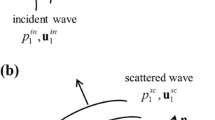Abstract
The human ear perceives acoustic vibrations within a great range of frequency and varying pressure which can be represented as the hearing area. Thecochlea in the inner ear acts as interface for mechanical, electrical and neural processes, and thus enables hearing.
In hisSensations of the Tone 1862 Hermann von helmholtz developed a resonance theory of hearing which states that sound of a distinct frequency sets only that part of the basilar membrane to mechanical resonance vibrations that is tuned to this frequency. First doubts concerning this explanation were expressed by Max wien in 1905.
Evidently, Helmholtz was unaware of the fact that a century ago Conte Giordano Riccati, a son of the mathematician Iacopo Riccati, had developed a partially similar hearing theory in his bookDelle corde ovvero fibre elastiche (1767). The resonance theory probably originates from a fundamental idea formulated by Philippe Rameau in hisGénération harmonique (1737).
Numerous measurements performed on ears post mortem by Georg von Békésy (1899–1972) revealed, however, that the frequency-to-place transformation is not caused by resonance but by traveling waves on the basilar membrane.
Lately Frank Böhnke has calculated analytically the traveling waves applying the Finite Element Method in his doctoral thesisWellenausbreitung auf der Basilarplatte des menschlichen Ohres (1992). His approach offers a promising alternative to measurements of the inner ear of human beings.
Similar content being viewed by others
Literatur
Bathe, Klaus-Jürgen:Finite-Elemente-Methoden. (Deutsche Übersetzung von Peter Zimmermann). Springer: Berlin 1989.
Békésy, Georg von: „Zur Theorie des Hörens: Die Schwingungsform der Basilarmembran”.Physikalische Zeitschrift 29, (1928).
Békésy, Georg von:Experiments in Hearing. McGraw-Hill: New York 1960.
Böhnke, Frank:Wellenausbreitung auf der Basilarplatte des menschlichen Ohres. Dissertation: Technische Universität Ilmenau 1992.
Chladni, Ernst Florens Friedrich:Die Akustik. Breitkopf und Härtel: Leipzig 1802 und 1830.
Cremer, Lothar:Vorlesungen über Technische Akustik. Springer: Berlin 1971.
Dannemann, Friedrich:Die Naturwissenschaften in ihrer Entwicklung und in ihrem Zusammenhang, Bd. 4. Engelmann: Leipzig 1923.
Helmholtz, Hermann von:Die Lehre von den Tonempfindungen. Vieweg: Braunschweig 1862, 1896.
Michieli, Adriano Augusto: „Una famiglia di matematici e di poligrafi trivigiani: i Riccati”. InAtti del reale istituto Veneto di scienze, lettere ed arti. Parte seconda, Tomo 102, 103, 104. 1942–1945.
Poggendorff, Johann Christian:Geschichte der Physik. Barth: Leipzig 1879.
Rameau, Jean Philippe:Génération harmonique, ou traité de musique théorique et pratique. Prault fils: Paris 1737.
Riccati, Giordano:Delle corde ovvero fibre elastiche. S. Tomaso d'Aquino: Bologna 1767.
Riccati, Giordano: „Che lo studio delle matematiche non favorisce la miscredenza”.Nuova raccolta d'opuscoli scientifici e filologici 28. Venezia 1775.
Saveur, Joseph: „Système général des intervalles des sons, et son application à tous les systèmes et à tous les instruments de musique”.Mém. acad. sci. Paris 1701 (1704).
Wien, Max: „Ein Bedenken gegen die Helmholtzsche Resonanztheorie des Hörens”. In: Technische Hochschule Aachen (Hrsg.):Festschrift Adolph Wüllner [1835–1908]gewidmet … Teubner: Leipzig 1905.
Zwicker, Eberhard:Psychoakustik. Springer: Berlin 1982. Fortgeführt als Zwicker, Eberhard, and Fastl, Hugo:Psychoacoustics. Facts and Models. Springer: Berlin 1990.
Zwicker, Eberhard, und Feldtkeller, Richard:Das Ohr als Nachrichtenempfänger. Hirzel: Stuttgart 1967.
Additional information
Emil A. Fellmann zum 17. September 1992 gewidmet
Anschrift des Verfassers: siehe 2. Umschlagseite
Rights and permissions
About this article
Cite this article
Zimmermann, P. Entwicklungslinien der Hörtheorie. NTM N.S. 1, 19–36 (1993). https://doi.org/10.1007/BF02914090
Issue Date:
DOI: https://doi.org/10.1007/BF02914090




